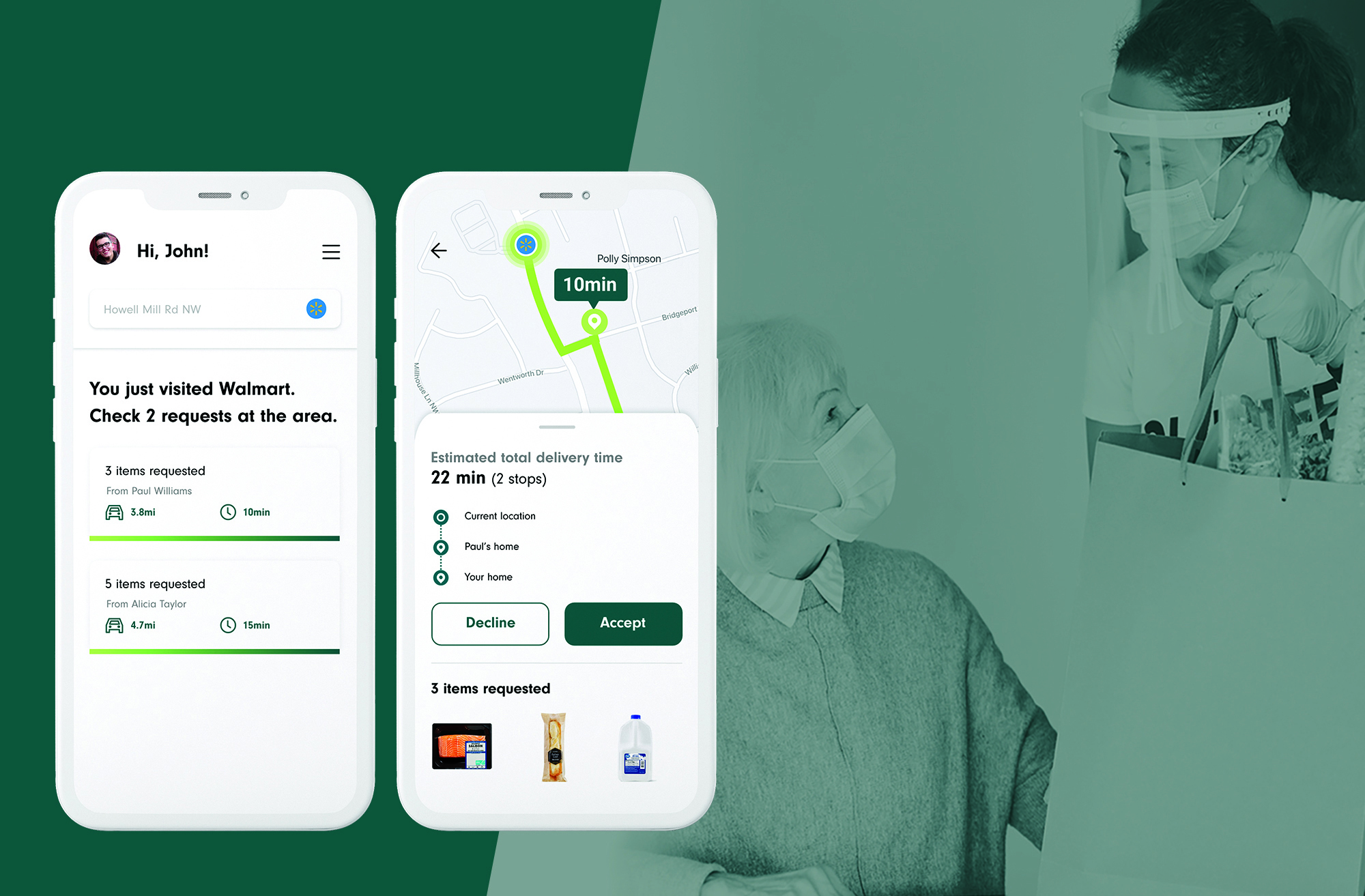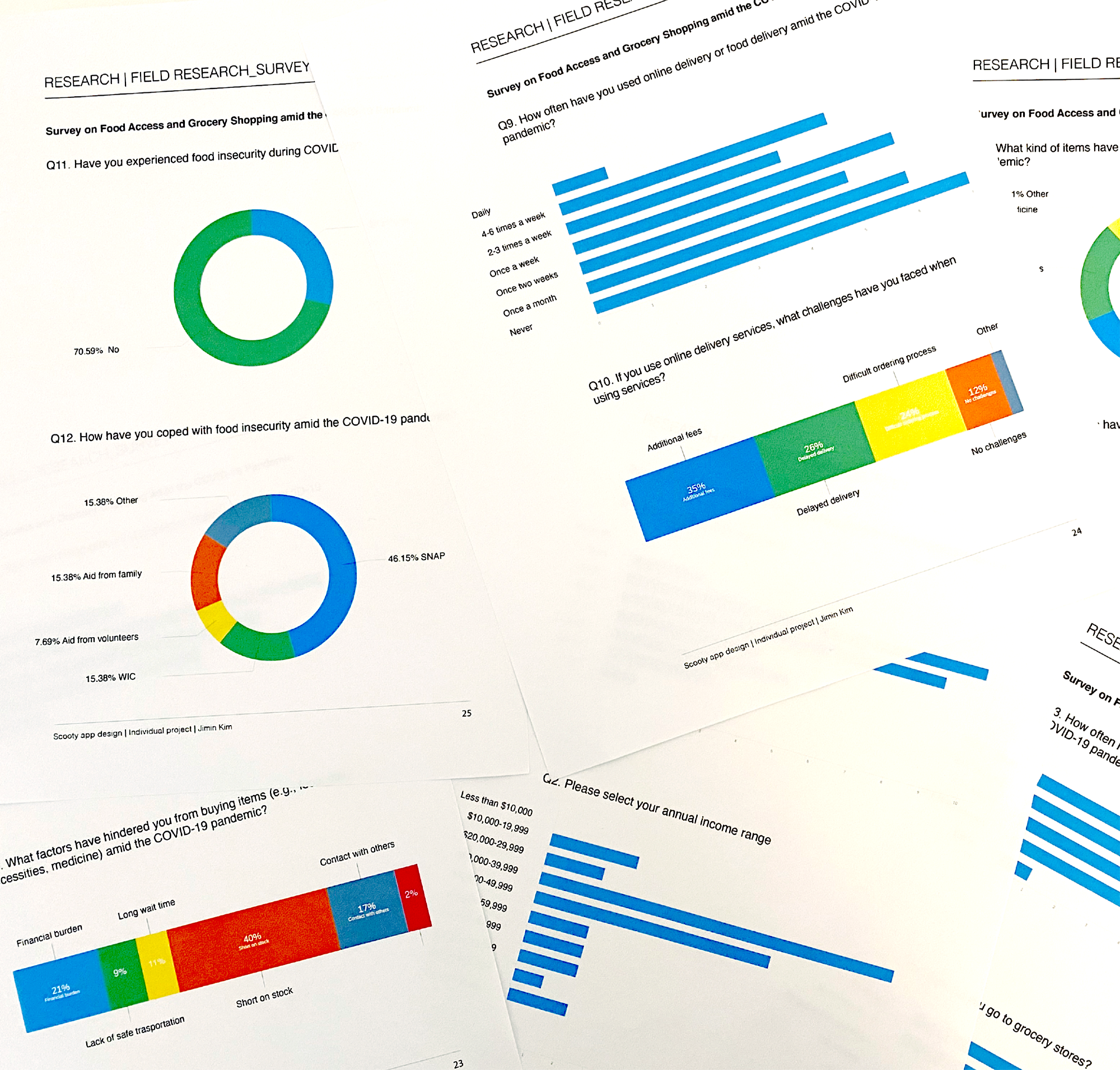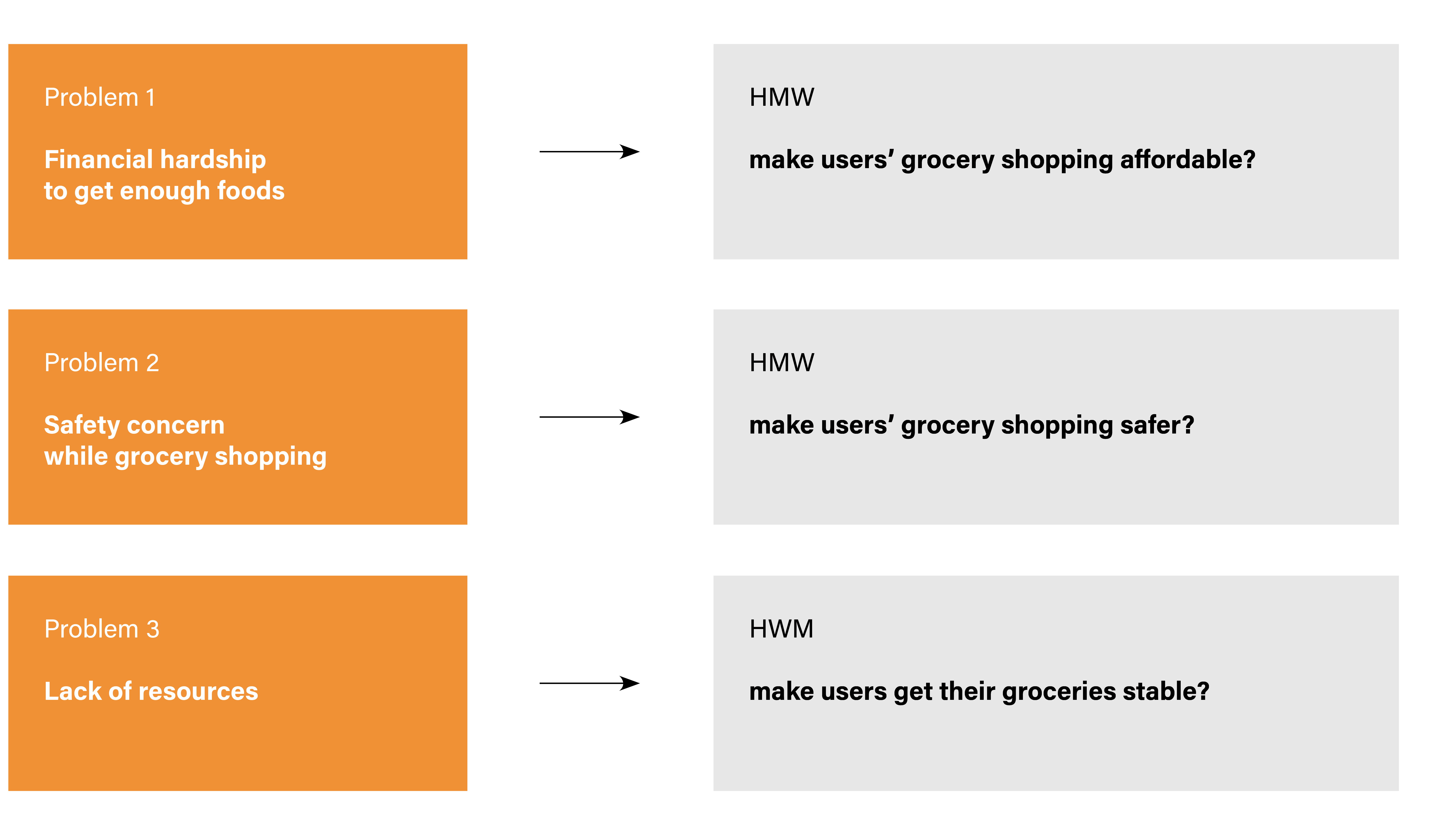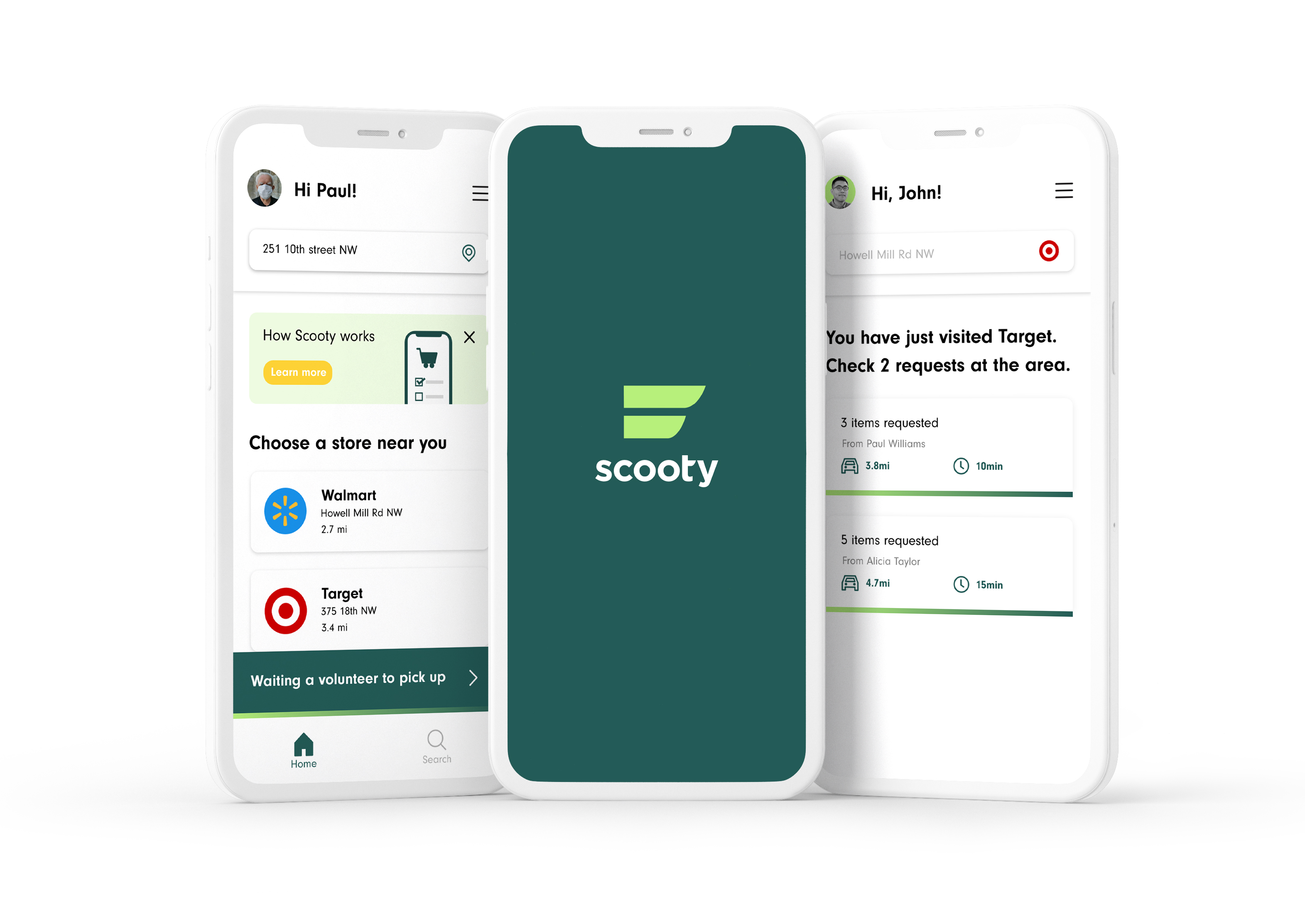Scooty
UX/UI Design
A Micro-Volunteering App for Vulnerable Populations in Food Deserts
Scooty app is to help vulnerable people purchase their groceries in a safe and affordable manner amid the COVID-19 pandemic.

Duration
8 Weeks
Project Info
Concept Study
Personal Passion Project
Deliverable
Mobile Application Platform
My Role
UX & Visual Design:
- Conducted secondary research, survey, and interview
- Synthesized data and created wireframe, visuals, and prototyping
Problem
The continued prevalence of the COVID-19 pandemic has made it more difficult for vulnerable populations to access foods, increasing the number of people experiencing food insecurity. HMW enable easier food access for vulnerable populations amid the COVID-19 pandemic?
Solution
Scooty matches the vulnerable in food deserts with potential volunteers currently at grocery stores, utilizing location tracking systems and social networking. By computing the proximity between the volunteer's home and the requester's home (the vulnerable), Scooty suggests volunteers a micro-volunteering opportunity.
1. Research
Secondary Research
Key Fact: 11.5 million poor Americans (4.1% of all) live in “food deserts”, where more than a mile away from a supermarket in a city or more than 10 miles in rural areas. They often struggle with having enough food, but the COVID-19 pandemic has exacerbated their food insecurity.
According to my research, not only people in food deserts but also the elderly, the disabled, and low-income families are having difficulty getting food since the COVID-19 pandemic. Thus, I decided on those people as a user group.
Primary Research
To get a detailed understanding of users' challenges in food access amid the COVID-19 pandemic, I conducted an online survey and an interview. I screened 31 participants who are low income families ($25,000 - $49,999) or older people (55+) for the research.


Key Findings & Key Insight
After collecting quantitative & qualitative data on users' food access during the pandemic, I clustered it into three categories.
From the research, I discovered that users have experienced:
- Financial hardship to get enough foods
- Safety concerns while grocery shopping
- Lack of resources
“Within the three problems, users have experienced many restrictions in grocery shopping both in-store and online since the COVID-19 pandemic. These restrictions hinder users from easily getting food amid the pandemic.”
2. Define
Persona

Narrowing down into design opportunity
To develop a design solution, I shaped my findings into an opportunity statement, using an HMW frame that gives room for innovative thinking.

3. Ideate
Idea: A volunteering app to pick up groceries for the vulnerable
With the opportunity statement in mind, I had a brainstorming session with mind mapping. Among the ideas, I decided to create a voluntary grocery pick-up app that matches the vulnerable who want their groceries safely picked up with potential volunteers currently at the store.

User story: A micro-volunteering is key
Based on the idea of the voluntary grocery pick-up app, I specified a user story by creating storyboards.

Idea Sketch

Wireframing

4. Design
Final Design

